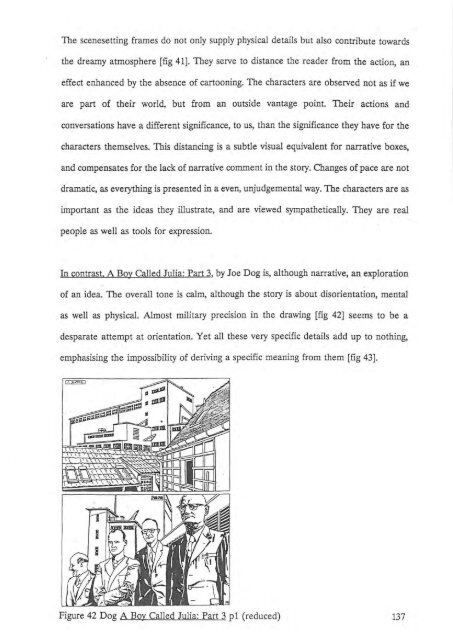Text - Rhodes University
Text - Rhodes University
Text - Rhodes University
Create successful ePaper yourself
Turn your PDF publications into a flip-book with our unique Google optimized e-Paper software.
The scenesetting frames do not only supply physical details but also contribute towards<br />
the dreamy atmosphere [fig 41]. They serve to distance the reader from the action, an<br />
effect enhanced by the absence of cartooning. The characters are observed not as if we<br />
are part of their world, but from an outside vantage point. Their actions and<br />
conversations have a different significance, to us, than the significance they have for the<br />
characters themselves. This distancing is a subtle visual equivalent for narrative boxes,<br />
and compensates for the lack of narrative comment in the story. Changes of pace are not<br />
dramatic, as everything is presented in a even, unjudgemental way. The characters are as<br />
important as the ideas they illustrate, and are viewed sympathetically. They are real<br />
people as well as tools for expression.<br />
In contrast. A Boy Called Julia: Part 3, by Joe Dog is, although narrative, an exploration<br />
of an idea. The overall tone is calm, although the story is about disorientation, mental<br />
as well as physical. Almost military precision in the drawing [fig 42] seems to be a<br />
desparate attempt at orientation. Yet all these very specific details add up to nothing,<br />
emphasising the impossibility of deriving a specific meaning from them [fig 43] .<br />
Figure 42 Dog A Boy Called Julia: Part 3 pI (reduced) 137
















